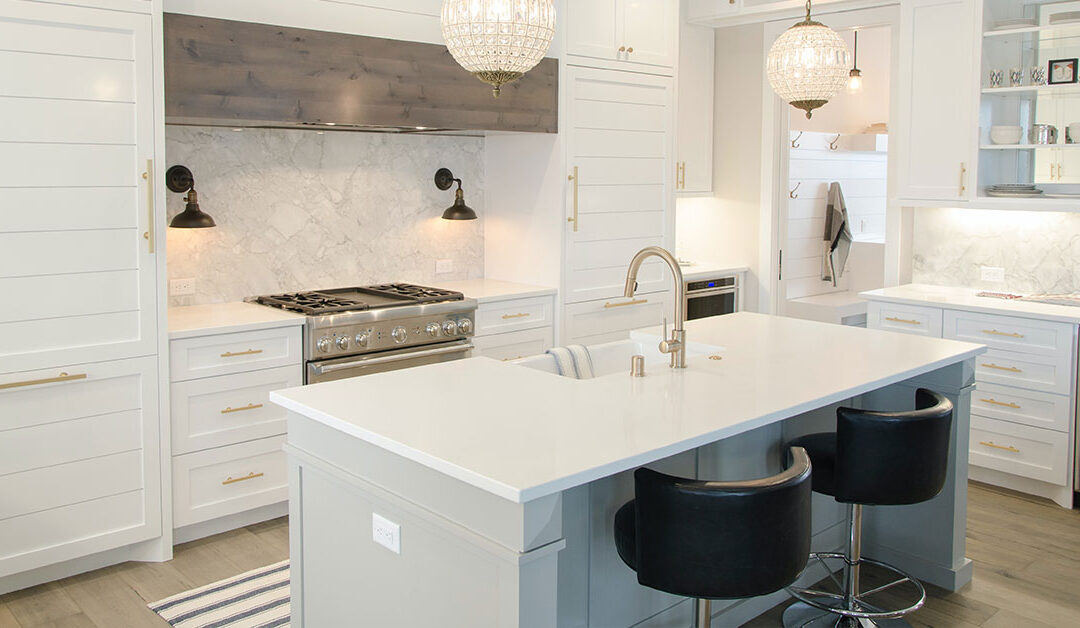If appearance is everything, functionality isn’t far behind. You need both to be able to create your dream kitchen. You know, the one that your mother will envy and try and take over every time she visits. Quality countertops are crucial to creating a kitchen that is both functional and aesthetically pleasing. If you’re at a loss for what type of material you are looking for for your kitchen counters, consult our guide below to find what materials are best for you.
Quartz
The Good: Quartz requires very little maintenance and doesn’t need to be sealed like natural stone countertops do. It is also resistant to stains, acid, heat and impacts, as well.
The Bad: Unfortunately, when used as a material for countertops, edges can chip. Fortunately, rounded edges can offer a solution to that problem. If your quartz countertop does chip, though, you will need a professional to fix it (wink wink).
Granite
The Good: Granite may just be the king of countertops, as its high-end look can make it a marvel (not marble, that comes next) of the kitchen. There are thousands of colors to choose from, and new sealers are nearly maintenance free. Even better? Granite can serve as a prep surface to cut and prepare food. It is also an extremely hard material, second in hardness to diamonds.
The Bad: Granite’s high-end, aesthetically-pleasing look comes at a cost, literally. It can be expensive. Any spills or stains on granite countertops should be wiped up fast, especially oils, wine, acids and soda, as granite can stain. While its hardness can be an asset, knives can dull if used as a prep surface.
Marble
The Good: Marble is a classic countertop material with a beautiful, high-end look. Additionally, it is water and heat resistant.
The Bad: Marble is also pricey like its granite counterpart. It is porous in nature, so it stains easily, too.
Laminate
The Good: Laminate countertops are friendly on your wallet and easy to have installed. While the thought of laminate countertop may cause you to cringe, lots of new patterns are available, with many that can mimic other types of countertops like natural stone, quartz or wood.
The Bad: Laminates are easily damaged by knives and sharp objects. Scratches and chips will damage laminate and are nearly impossible to repair.
Wood / Butcher Block
The Good: Using wood or butcher block as a countertop material offers a warm, comfortable look to your kitchen. Wood counters will turn your kitchen into the ultimate prep area, as it can be used as a cutting board, offering plenty of functionality. Bonus: it is heat resistant.
The Bad: Scratches can and will easily happen. Luckily, they can be sanded out.
Ceramic Tile
The Good: Ceramic tile is inexpensive and easy to maintain as a countertop material. It’s also pretty durable, and there are numerous choices for different colors, textures, designs and prices.
The Bad: This one is self-explanatory, but tile creates an uneven surface as a countertop. Tiles can chip or crack, and if you are looking to custom-design your tiles, that can get a little pricey.
Stainless Steel
The Good: Stainless steel offers a modern, industrial look. Stainless steel can handle heat, is super easy to clean and is a bacteria-resistant surface.
The Bad: Stainless steel countertops can be expensive and can cause a lot of noise when in use. Plus, you can use it as a prep surface to cut on.
Concrete
The Good: Concrete is an extremely customizable surface for kitchen counters. It mixes easily with other materials. Plus, if you’re someone who takes energy efficiency into account, concrete counters take in heat when it is hot and releases heat when the home is cool.
The Bad: Custom work for concrete countertops can get expensive. It is also possible for concrete counters to crack.
There are endless options to consider for countertops in your home, allowing you to customize your kitchen in whatever ways you like. We at Eagle Construction & Remodeling are here to help you in your quest to build or remodel your kitchen into your dream culinary space.

